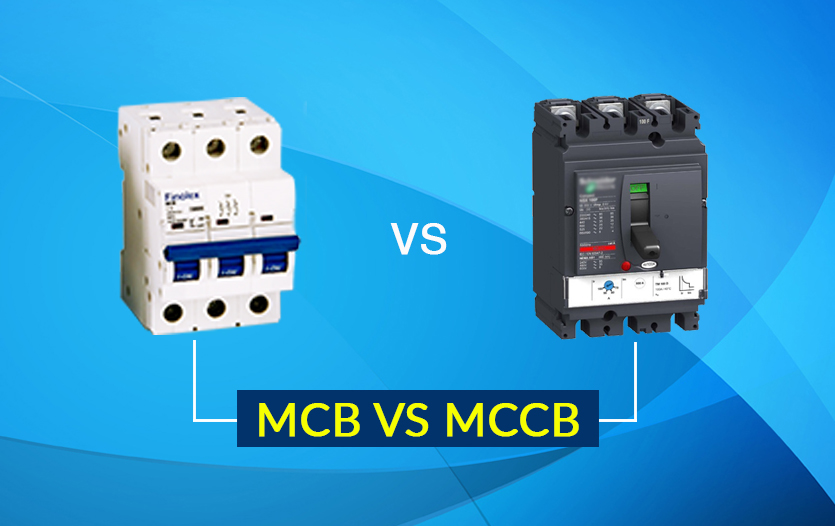Understanding The MCCB’s And MCB’s Differences?

The terms MCBs and MCCBs are fairly common nowadays. MCBs and MCCBs have grown in popularity among electricians as the safety of home electricity supply systems has improved. MCBs and MCCBs perform the same function as electric circuit breakers.
MCBs and MCCBs have different applications and are used in different places, and people still regard them as the same device. There is no doubt that MCBs and MCCBs are quite distinct. Despite the minor differences, the application is vastly different.
It is beneficial to understand the distinctions between MCBs and MCCBs. This post will discuss the key distinctions between MCB and MCCB.
What Is An Mcb?
MCB stands for Miniature Circuit Breaker (MCB). The device breaks the circuit in the event of an electrical overload. The MCB is used in the home’s electrical system.
This device guard against short circuits. It is also useful for protecting consumer electrical systems from overloading. Not only that, but the MCBs safeguard the entire house against electric fire hazards.
What Is An Mccb?
MCCB is an abbreviation for Molded Case Circuit Breaker and a Circuit Breaker, but it serves a different purpose and has different features. The MCCB is used in situations where adjustable tripping is required.
The Formalized Case At predetermined temperatures and loads, the circuit will trip. MCCBs, on the other hand, are used to adjust the tripping level in high current situations.
The MCCB is controlled by the current and the temperature. Bimetallic MCCBs are available for use with current and temperature settings. It is frequently used in industrial settings or large commercial spaces.
Differences Between MCB and MCCB:
- Tripping Circuit
The MCB’s tripping circuit is fixed. The circuit in the MCCB, on the other hand, is movable. You can modify the tripping circuit to suit your needs, which is impossible in MCB.
- Rating Current
The MCB’s current rating is set to 100 amps. Although some products have a rating greater than 100 amps, this is uncommon. The current rating of MCCBs ranges from 10 amps to 200 amps.
- Interrupting Rating
The MCBs are rated for 1800 amps of current interruption, which is the maximum that any MCB can withstand. MCCBs, on the other hand, have current interruption levels ranging from 10,000 amps to 200,000 amps. These ratings are extremely high and only apply to the entire use case.
- Applications
In the low current circuit environment, MCBs are common. The overloading point is quite small in a low current environment, which is why it is so common among consumers.
MCCBs are beneficial in high-current circuit environments and are used everywhere, from large machines to factories. MCCBs are not suitable for low current situations because they are dangerous.
The same principle applies to MCBs and MCCBs. However, the use case and application of these devices differ significantly. The miniature circuit breaker can be used in homes and apartments.
On the other hand, moulded case circuit breakers can be used in industries, factories, or any other location with a high-current circuit environment.
Check out IndoAsian if you’re looking for a home or industrial application. It provides a variety of electrical systems and devices of the highest quality.











